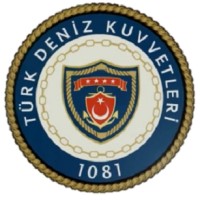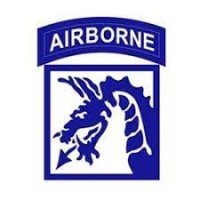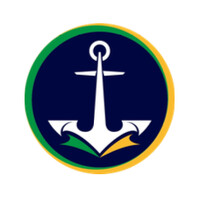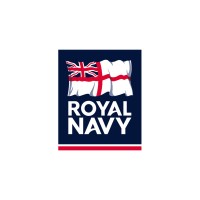
Turkish Navy Company Cyber Security Posture
dzkk.tsk.trDeniz Kuvvetleri Komutanlığı 06100 Bakanlıklar /ANKARA +90 (312) 417 3065 +90 (312) 417 6250 (Pbx) [email protected] Show more Show less
Turkish Navy Company Details
turkish-navy
10,001+ employees
0
928
Armed Forces
dzkk.tsk.tr
Scan still pending
TUR_1743381
In-progress
Between 800 and 900
This score is AI-generated and less favored by cyber insurers, who prefer the TPRM score.
 Turkish Navy Global Score
Turkish Navy Global Score.png)

Turkish Navy Company Scoring based on AI Models
| Model Name | Date | Description | Current Score Difference | Score |
|---|---|---|---|---|
| AVERAGE-Industry | 03-12-2025 | This score represents the average cybersecurity rating of companies already scanned within the same industry. It provides a benchmark to compare an individual company's security posture against its industry peers. | N/A | Between 800 and 900 |
Turkish Navy Company Cyber Security News & History
| Entity | Type | Severity | Impact | Seen | Url ID | Details | View |
|---|
Turkish Navy Company Subsidiaries

Deniz Kuvvetleri Komutanlığı 06100 Bakanlıklar /ANKARA +90 (312) 417 3065 +90 (312) 417 6250 (Pbx) [email protected] Show more Show less
Access Data Using Our API

Get company history
.png)
Turkish Navy Cyber Security News
HAVELSAN ADVENT: The Admiral of Naval Defense
ADVENT: The Force Multiplier of the Turkish Navy. Developed in collaboration with the Turkish Naval Forces Research Center Command and HAVELSAN, ...
Turkish naval ship arrives in Pakistan on visit to strengthen maritime cooperation
ISLAMABAD: A Turkish naval ship, TCG Büyükada, has arrived in Pakistan on a visit to strengthen maritime cooperation between the two countries, ...
Turkish navy starts construction of three new warships
The Turkish navy has begun the new year by announcing the construction of three warships based on domestic designs.
Aselsan completes upgrade of Turkish Navy’s Barbaros-class frigate
Aselsan has concluded the mid-life upgrade (MLU) programme on the Turkish Navy's Barbaros-class frigate, TCG ORUÇREİS.
Security Vessel News Roundup | January 28 – South Korean, Chinese and Turkish frigates, Belgian Navy minehunter and more
The yet unnamed vessel will be the fifth frigate in the locally built Istif-class. Class lead ship TCG Istanbul was built by Istanbul Naval ...
Türkiye develops AI-powered drone capable of flying without GPS
Türkiye has developed an advanced drone infrastructure capable of operating without GPS, a first in its defense industry. The system, which ...
Turkish Navy commissions first Reis-class submarine
First-of-class TCG Pirireis (S 330) was formally commissioned during a ceremony held at Aksaz Naval Base in Marmaris, southwest Türkiye, on 25 August.
Aselsan conduct first test of GÖKSUR VLS for Turkish Navy
Türkiye defence company Aselsan has confirmed a successful first live fire test of its GÖKSUR Vertical Launch System (VLS) from a Turkish Navy ...
Does Turkey Have A Problem With The U.S. Navy?
Two separate incidents this year involving a U.S. submarine and aircraft carrier seemingly suggest that Turkey is wary of the U.S. Navy's ...

Turkish Navy Similar Companies

Swedish Armed Forces
The Swedish Armed Forces is one of the biggest authorities in Sweden and is headed by a Supreme Commander. The deputy leader of the authority is the Director General. As the only authority permitted to engage in armed combat, the Swedish Armed Forces are Sweden’s ultimate security policy resource

British Army
Joining the British Army, you’ll get much more from life than you ever would with a civilian career – you’ll have the opportunity to do something that really matters, with a team that are like family to you. The sense of belonging in the Army is next level: when you’ve trained with each other and ov

XVIII Airborne Corps
XVIII Airborne Corps rapidly deploys ready Army forces anywhere in the world by air, land or sea, entering forcibly if necessary, to shape, deter, fight and win. The Corps headquarters provides mission command as an Army, Joint or Combined Task Force headquarters. The XVIII Airborne Corps is “Ameri

Brazilian Navy
Mission : "To prepare and use the Naval Power, in order to contribute to the Defense of the Homeland; to guarantee the constitutional powers and, on the initiative of any of them, of law and order; to fulfill the subsidiary attributions provided for by Law; and to support the Foreign Policy". Futur

Royal Navy
At sea, on land and in the air. The Royal Navy is made up of five arms. The might of ships in the Surface Fleet, the aerial strength that is the Fleet Air Arm, the covert Submarine Service, the elite and amphibious Royal Marines, and the civilian fleet central to our effectiveness, the Royal Fleet

Royal Navy
At sea, on land and in the air. The Royal Navy is made up of five arms. The might of ships in the Surface Fleet, the aerial strength that is the Fleet Air Arm, the covert Submarine Service, the elite and amphibious Royal Marines, and the civilian fleet central to our effectiveness, the Royal Fleet

Frequently Asked Questions
Explore insights on cybersecurity incidents, risk posture, and Rankiteo's assessments.
Turkish Navy CyberSecurity History Information
How many cyber incidents has Turkish Navy faced?
Total Incidents: According to Rankiteo, Turkish Navy has faced 0 incidents in the past.
What types of cybersecurity incidents have occurred at Turkish Navy?
Incident Types: The types of cybersecurity incidents that have occurred include .
Incident Details
What are the most common types of attacks the company has faced?
Additional Questions
What Do We Measure?
















Every week, Rankiteo analyzes billions of signals to give organizations a sharper, faster view of emerging risks. With deeper, more actionable intelligence at their fingertips, security teams can outpace threat actors, respond instantly to Zero-Day attacks, and dramatically shrink their risk exposure window.
These are some of the factors we use to calculate the overall score:
Identify exposed access points, detect misconfigured SSL certificates, and uncover vulnerabilities across the network infrastructure.
Gain visibility into the software components used within an organization to detect vulnerabilities, manage risk, and ensure supply chain security.
Monitor and manage all IT assets and their configurations to ensure accurate, real-time visibility across the company's technology environment.
Leverage real-time insights on active threats, malware campaigns, and emerging vulnerabilities to proactively defend against evolving cyberattacks.




